-
2018-09-12150碟子
-
2018-09-13一次性环保餐具-碟子
-
2018-09-14一次性可降解餐具-270ml碗
-
2018-09-14一次性餐具-叉子
-
2018-09-14环保餐盒
可降解颗粒及相关方式介绍
可降解颗粒包括在用于地下应用如钻井中能进行不可逆降解的可降解材料(其通常是可降解聚合物)。此处所使用的术语"一种颗粒"或"多种颗粒"是指具有以下物理形状的一种或多种微粒薄层(platdet)、刨花(shavings)、纤维、小薄片(flake)、带状、棒、条、球体、超环状、小球状、片(tablet)或其它合适形状的。作为此处所使用的术语"不可逆,,意指可降解材料可原位降解(例如在钻井中),但降解之后不会原位(例如在钻井中)重结晶或重新固结。术语"降解"或"可降解"指可降解材料可以进行诸如异相(或本体消耗)和均相(表层消耗沐解降解的两种相对极端情形,以及在这两者之间的任意降解阶段。
Degradable particles include biodegradable materials (usually biodegradable polymers) that can be irreversibly degraded in underground applications such as drilling. The term "one particle" or "multiple particles" as used herein refers to one or more thin layers of particles, shavings, fibers, flakes, ribbons, bars, spheres, super rings, small balls, tablets or other suitable shapes with the following physical shapes. As the term "irreversible" used here, it means that degradable materials can be degraded in situ (such as in the drilling well), but will not be recrystallized or re-consolidated in situ (such as in the drilling well) after degradation.
这种降解可以尤其是由化学或热反应或辐射引发的反应中所产生的。作为此处所用术语"一种聚合物"或"多种聚合物"并不暗示特定聚合度,例如,此定义还包括低聚物。可降解聚合物的可降解度通常少部分地取决于其骨架结构。例如,在骨架中存在的可水解和/或可氧化的键通常能产生可以如下所述进行降解的材料。这些聚合物的降解速率取决于重复单元的类型、组成、序列、长度、分子几何形状、分子量、形态(例如结晶度、球晶尺寸以及取向度)、亲水性、疏水性、表面积和添加剂。
This degradation can be especially caused by chemical or thermal reactions or reactions induced by radiation. As used herein, the term "one polymer" or "multiple polymers" does not imply a specific degree of polymerization. For example, this definition also includes oligomers. The degradability of degradable polymers usually depends at least in part on their skeleton structure. For example, hydrolysable and/or oxidizable bonds present in the skeleton can usually produce materials that can be degraded as described below. The degradation rate of these polymers depends on the type, composition, sequence, length, molecular geometry, molecular weight, morphology (such as crystallinity, spherulite size and orientation), hydrophilicity, hydrophobicity, surface area and additives of the repeating units.
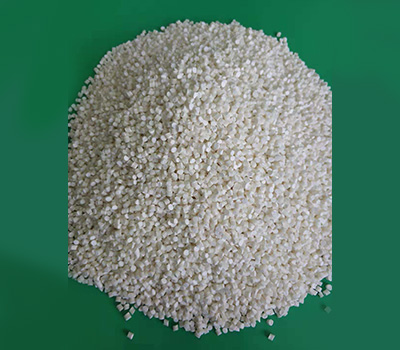

另外,该聚合物所处环境如温度、水分的存在、氧气、微生物、酶、pH等会影响其如何降解。可降解聚合物的物理性能取决于诸如重复单元的组成、链的柔性、极性基团的存在、分子质量、支化度、结晶度、取向度等几个因素。例如,短链支化降低了聚合物的结晶度,而长链支化降低了熔融粘度并且尤其赋予具有拉伸硬化性态的拉伸粘度。
In addition, the environment of the polymer, such as temperature, presence of water, oxygen, microorganism, enzyme, pH, etc., will affect its degradation. The physical properties of degradable polymers depend on several factors, such as the composition of repeating units, the flexibility of chains, the existence of polar groups, molecular weight, branching degree, crystallinity, and orientation degree. For example, the short chain branching reduces the crystallinity of the polymer, while the long chain branching reduces the melt viscosity and especially gives the tensile viscosity with tensile hardening property.
该应用材料的特性可以进一步通过共混、以及与其它聚合物共聚、或通过改变大分子构型(如超支化聚合物、星型聚合物、或枝状聚合物等)而修整。任何这种合适的可降解聚合物的特性(例如疏水性、亲水性、降解速率,等)可以通过沿该聚合物链引入所选择的功能性基团而修整。用于制备在地下应用中有用的可降解颗粒(例如作为酸性前体、流体损失控制颗粒、导引剂、滤饼部分、钻井液、水泥添加剂等)的常规方法尤其包括乳液法和溶液沉淀法。为了使用乳液法制备可降解颗粒,一般将可降解聚合物材料如聚(乳酸)溶解于卤化溶剂如二氯甲烷中以形成聚合物溶液,随后在充分剪切下向该聚合物溶液加入水和表面活性剂以形成乳液。该乳液形成之后,通过真空抽提或水蒸气抽提将该溶剂从该乳液中除去,在水相中留下基本不含溶剂的聚合物颗粒。然后去除水,并通过离心、过滤或喷雾干燥收集颗粒。同样,用溶液沉淀法制备可降解颗粒包括将可降解聚合物溶解在水可混溶的溶剂中以形成聚合物溶液。
The characteristics of the applied material can be further modified by blending, copolymerization with other polymers, or by changing the macromolecular configuration (such as hyperbranched polymer, star polymer, or dendritic polymer, etc.). The characteristics of any such suitable degradable polymer (such as hydrophobicity, hydrophilicity, degradation rate, etc.) can be modified by introducing selected functional groups along the polymer chain. Conventional methods for preparing degradable particles useful for underground applications (such as acid precursors, fluid loss control particles, guiding agents, filter cake parts, drilling fluids, cement additives, etc.) include, in particular, the lotion method and the solution precipitation method. In order to prepare degradable particles by the lotion method, degradable polymer materials such as poly (lactic acid) are generally dissolved in halogenated solvents such as dichloromethane to form a polymer solution, and then water and surfactant are added to the polymer solution under full shear to form a lotion. After the lotion is formed, the solvent is removed from the lotion by vacuum extraction or water vapor extraction, leaving polymer particles basically free of solvent in the water phase. The water is then removed and the particles are collected by centrifugation, filtration or spray drying. Similarly, the preparation of degradable particles by the solution precipitation method includes dissolving the degradable polymer in a water-miscible solvent to form a polymer solution.
以足够的剪切将表面活性剂和/或水加入该聚合物溶液,以便该溶剂与聚合物溶液分离,留下基本无溶剂的聚合物颗粒,所述聚合物颗粒可以用已经讨论过的相同方法收集。与目前制备可降解颗粒方法相关的一个问题是表面活性剂和/或多溶剂的必要性
The surfactant and/or water are added to the polymer solution with sufficient shearing force, so that the solvent is separated from the polymer solution, leaving polymer particles that are basically solvent-free, and the polymer particles can be collected by the same method that has been discussed. A problem related to the current method of preparing degradable particles is the necessity of surfactants and/or multi-solvent
。乳液法和溶液沉淀法都需要使用不止一种的溶剂和/或表面活性剂。而且在这些方法中可能使用的卤化溶剂会造成健康问题并且影响环境。因此,不需要使用表面活性剂和/或包括卤化溶剂在内的多种溶剂的制备可降解颗粒的方法会是有益的,并且更节省成本。
。 Both the lotion method and the solution precipitation method require the use of more than one solvent and/or surfactant. Moreover, halogenated solvents that may be used in these methods will cause health problems and affect the environment. Therefore, the method of preparing degradable particles without using surfactants and/or a variety of solvents including halogenated solvents would be beneficial and more cost-effective.
- 上一个: 一次性玉米淀粉餐具的选购须知
- 下一个: 真正的环保餐具是可降解和利用的!
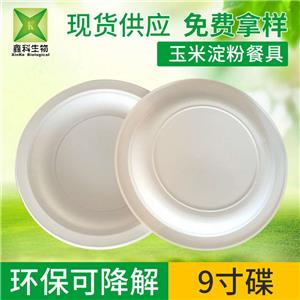 150碟子
150碟子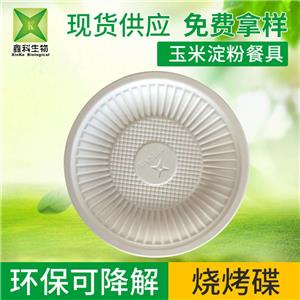 一次性环保餐具-...
一次性环保餐具-...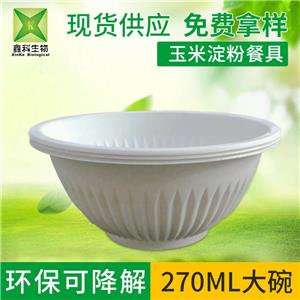 一次性可降解餐具...
一次性可降解餐具...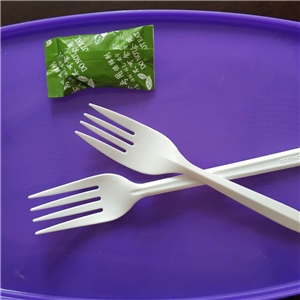 一次性餐具-叉子
一次性餐具-叉子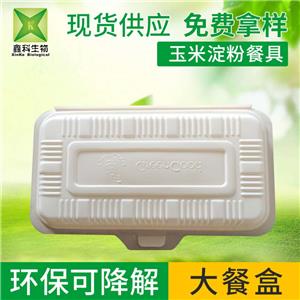 环保餐盒
环保餐盒
相关产品:





